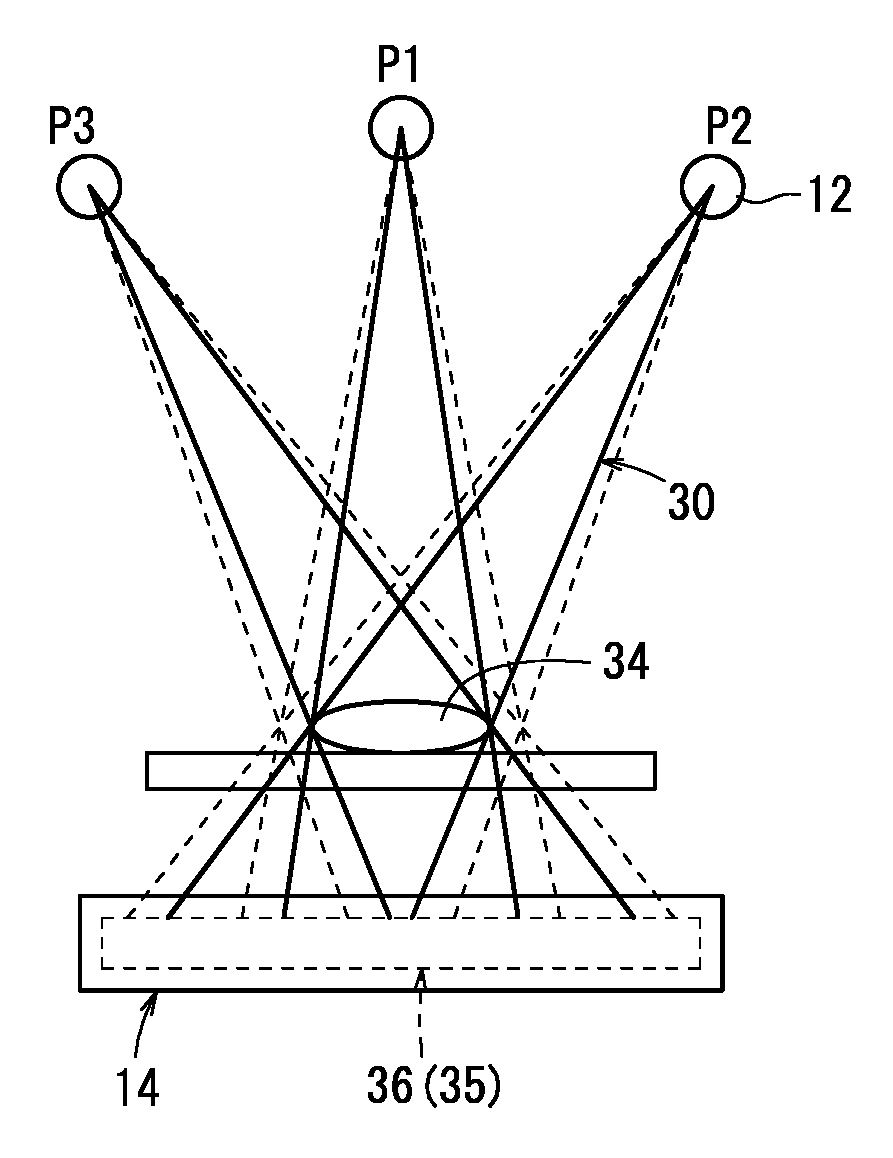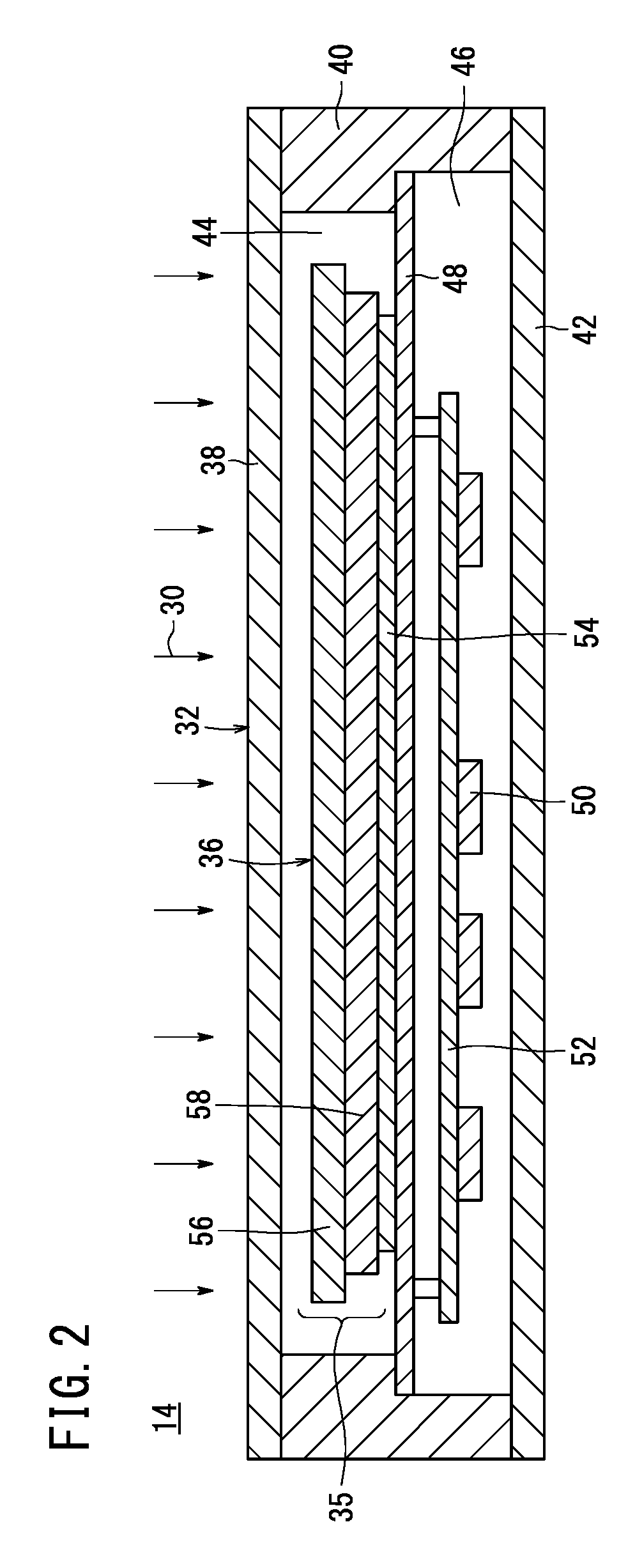Radiation imaging system
a technology of imaging system and radiography, applied in the field of radiographic image capturing system, can solve the problems of not being able to generate accurate corrective images, not being able to apply the disclosed method to the image capturing process for capturing successive images, and not being able to achieve accurate corrective images, etc., to achieve the effect of reducing the cost, preventing the s/n ratio and contrast from being lowered, and lowering the degree of freedom
- Summary
- Abstract
- Description
- Claims
- Application Information
AI Technical Summary
Benefits of technology
Problems solved by technology
Method used
Image
Examples
Embodiment Construction
[0058]A radiographic image capturing system according to an embodiment of the present invention, which is applied to carry out a tomosynthetic image capturing process, will be described below with reference to FIGS. 1 through 16.
[0059]As shown in FIG. 1, the radiographic image capturing system 10 according to the present embodiment includes a radiation source 12, a radiation detecting device 14, a radiographic image acquiring unit 16, an image memory 18, a moving unit 20, a timing prediction unit 22, an image correction unit 24, an image reconstructor 26, and a console 28 (controller) for controlling the aforementioned components.
[0060]The radiation detecting device 14 includes a casing 32 made of a material that is permeable to radiation 30 emitted from the radiation source 12, and a radiation detector 36 (see FIG. 2) having a converter 35 for converting radiation 30 from the radiation source 12 that has passed at least through a subject 34.
[0061]As shown in FIG. 2, the casing 32 h...
PUM
 Login to View More
Login to View More Abstract
Description
Claims
Application Information
 Login to View More
Login to View More - R&D
- Intellectual Property
- Life Sciences
- Materials
- Tech Scout
- Unparalleled Data Quality
- Higher Quality Content
- 60% Fewer Hallucinations
Browse by: Latest US Patents, China's latest patents, Technical Efficacy Thesaurus, Application Domain, Technology Topic, Popular Technical Reports.
© 2025 PatSnap. All rights reserved.Legal|Privacy policy|Modern Slavery Act Transparency Statement|Sitemap|About US| Contact US: help@patsnap.com



